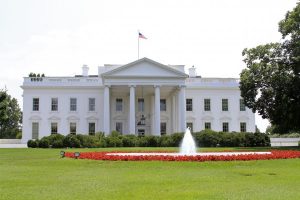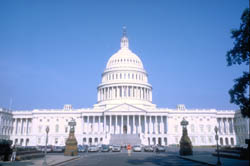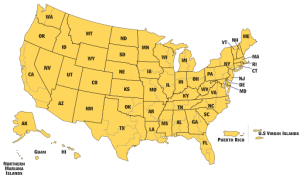As we learned four years ago, the election process for President and Vice President of the United States is many-layered and extends over several months.  Not only have candidates been campaigning for what seems to be years; the timeframe to vote, in various ways, has been greatly expanded by a number of states, which means that voting lasts for weeks and is not limited to one day – the first Tuesday after the first Monday in November every four years.
Not only have candidates been campaigning for what seems to be years; the timeframe to vote, in various ways, has been greatly expanded by a number of states, which means that voting lasts for weeks and is not limited to one day – the first Tuesday after the first Monday in November every four years.
While conspiracy theories abound (promulgated primarily by far-right activists) that throw doubt on the validity of certain absentee and other votes – not only unfounded complaints about ballot boxes and voting machines but also about how overseas military personnel vote – there is almost no proof in any jurisdiction for a significant level of voter fraud. Unfortunately, the facts do not always seem to get through to diehard supporters of the convicted felon, one-term former President Donald Trump.  On the other hand, in a number of communities, early and absentee voting has been very robust already in mid-October, so it is hoped that the vast majority of American voters are not swayed by the lies.
On the other hand, in a number of communities, early and absentee voting has been very robust already in mid-October, so it is hoped that the vast majority of American voters are not swayed by the lies.
Unlike our sister advanced democracies around the world, the US does not elect the President and Vice President by popular vote. Instead, as we learned (the hard way) in 2020 and early 2021, we have the added complication (and burden) of the Electoral College – which is very hard to abolish or reform. This process, which is required by the Constitution, was a compromise between a popular vote by citizens and a vote in Congress. It is a system with racist origins that continues to give an unfair disadvantage to African Americans, “diluting their political power. Because the concentration of black people is highest in the South, their preferred presidential candidate is virtually assured to lose their home states’ electoral votes. … Under the Electoral College, black votes are submerged.”
In the Electoral College, each state gets as many electors as it has members of Congress (House and Senate); with Washington, DC’s three electors, there are currently 538 electors total, meaning that a candidate needs at least 270 electors to win. This is why there are “swing states” and why the margins to win the entire election can be so small. (Does this make any sense?…)
While it may be logical for all States’ official votes (as certified by each State’s designated official) to be officially counted before the US Congress at a certain time following Election Day, the addition of the Electoral College process adds a number of opportunities for hanky-panky to occur. Radical MAGA Republicans, led by Trump, took full advantage of these loopholes, leading to the deadly insurrection of January 6, 2021 – which nearly destroyed our democratic republic.
Here is the 2024-25 timeline after all votes have been cast by November 5:
- No later than December 11, 2024. Certificate of Ascertainment of Appointment of Electors Issued: executive of each state issues a certificate of ascertainment, which names and appoints the individuals who will cast the state’s electoral votes for president and vice president. This includes a security feature, enacted by law in 2022 (see below).
- Tuesday, December 17, 2024. Meeting and Vote of Electors in their States. The electors meet in their respective states on the first Tuesday after the second Wednesday in December

- December 25, 2024 (fourth Wednesday in December). Deadline for Electoral Votes to be Received. Officials in Washington, DC – the president of the Senate or the Archivist of the United States – should receive the certificates from each state.
- January 3, 2025. 119th Congress Convenes. This Congress includes all the Representatives and Senators that have been elected in November.
- January 6, 2025. Congress Counts Electoral Votes. The House and Senate “shall meet in the Hall of the House of Representatives at 1:00 p.m., with the president of the Senate or a designee presiding. In this joint session, the electoral certificates properly ascertained for each state are counted and tallied, and the result of the count is announced by the president of the Senate” (the Vice President).
- January 20, 2025. Inauguration Day. Those elected President and Vice President take their respective oaths of office at 12:00 pm.
In late December 2022, because of the insurrection, Congress passed the Electoral College Reform Act (ECRA). This includes the following provisions:
- Requires that states appoint electors on Election Day in accordance with pre-existing law: “the legislation eliminates the ‘failed election’ loophole and the potential for partisan actors to exploit it.”
- Adds clarity to the process by which state officials ascertain and certify their election results to Congress. The official mentioned is generally designated as the Governor of the State.
- Gives federal courts a clear and expedited role in ensuring that states send lawful certifications of election results to Congress. This provision, along with others, “seek to ensure that only one even arguably lawful slate of electors from each state is presented to Congress to count. This should address concerns about governors or other state officials going ‘rogue’ and purporting to certify appointments of electors that do not reflect the outcome of the election.”

- Makes it absolutely clear that the Vice President’s role in the electoral vote-counting process is ministerial: “the vice president’s role in the process of counting electoral votes is limited to ‘ministerial duties’ and … he or she has ‘no power to solely determine, accept, reject, or otherwise adjudicate or resolve disputes over the proper list of electors, the validity of electors, or the votes of electors.’”
- Makes it more difficult for members of Congress to make frivolous objections to state election results.
- Clarifies how a majority of appointed electors will be calculated.
The November 2024 election is the first time the ECRA will be in play. Just because there are no rules, however, does not guarantee that those rules will be followed. Trump and his cronies have already been making concerted efforts to ensure that Trump takes office in January 2025 even if he does not win the election the normal way. They can also try to find many other ways to skirt the rules and legal avenues. Perhaps even more alarming are the myriad death threats and other illegal activities that election workers, Secretaries of State, and other Americans who are just trying to do their jobs are having to endure because of disinformation, cruelty, misogyny and racism emanating from Trump and his supporters. It is disgusting, enraging and sobering that our political landscape has come this far mainly on the efforts of one aging psychopathic charlatan…
 Millions of Americans will have voted one way or another by November 5. We then wait with bated breath not only for the results – which may not be that night – but for all the interim steps that move us toward Inauguration. Let us fervently hope that every step of the way will be peaceful, that voters will have confidence that their vote has not only been counted properly but that the system is completely fair, and that our democratic republic survives – and even thrives.
Millions of Americans will have voted one way or another by November 5. We then wait with bated breath not only for the results – which may not be that night – but for all the interim steps that move us toward Inauguration. Let us fervently hope that every step of the way will be peaceful, that voters will have confidence that their vote has not only been counted properly but that the system is completely fair, and that our democratic republic survives – and even thrives.
